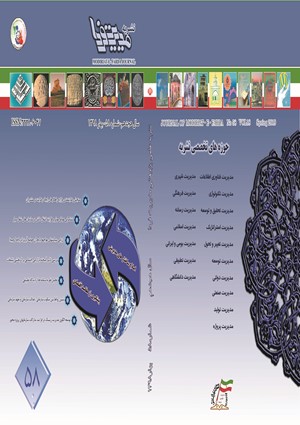الگوي توسعه¬منابع انساني در سازمان¬هاي دولتي ايران با رويكرد خدمات¬عمومي نوين (مورد مطالعه: وزارت نيرو)
محورهای موضوعی :
1 - دانشگاه علامه طباطبایی
کلید واژه: توسعه منابع انسانی, خدمات عمومی نوین, پارادایم مدیریت دولتی, مدل پارادایمی,
چکیده مقاله :
شناخت ابعاد توسعه منابع انسانی و ارائه راهکارهای منطقی جهت توانمندسازی و توسعه آنها با در نظر داشتن الزامات رویکرد خدمات عمومی نوین از اهم وظایف مدیران سازمان های دولتی به شمار می رود. هدف مطالعه حاضر، طراحی الگوی توسعه منابع انسانی در سازمان های دولتی با رویکرد خدمات عمومی نوین است. جامعه آماری پژوهش کیفی شامل مديران و روئساي بخش ها و كارشناسان ارشد ستاد وزارت نیرو در شهر تهران، به علاوه، اساتيد و صاحبنظران مديريت منابع انساني در دانشگاه ها مي باشد. نمونه مورد نیاز برای مصاحبه های ساختاریافته تا حد اشباع نظری و از طریق نمونه گیری قضاوتی هدفمند گردآوری شد. در مجموع از 16 نفر داده های مورد نیاز گردآوری شد. به منظور تحلیل داده های کیفی از تئوری داده بنیاد بهره گرفته شد. از 267 خرده مقوله استخراج شده از گزاره های کلامی، 43 مقوله محوری احصاء شد که مدل پارادایمی توسعه منابع انسانی با رویکرد خدمات عمومی نوین را شکل داد. بدین ترتیب که 20 خرده مقوله، 4 مقوله محوری شرایط علی، 30 خرده مقوله، 5 مقوله محوری شرایط زمینه ای، 33 خرده مقوله، 8 عامل مداخله-گر، 24 خرده مقوله، 4 مقوله محوری پدیده، 102 خرده مقوله، 17 مقوله محوری استراتژی ها، و 58 خرده مقوله، 4 مقوله محوری پیامدهای توسعه منابع انسانی با رویکرد خدمات عمومی نوین را تشکیل داد. مشخص شد که توسعه منابع انسانی با رویکرد خدمات عمومی نوین مشتمل بر چهار مولفه کلیدی مشارکت نیروی انسانی در تصمیمات سازمانی، توسعه شایستگی های نیروی انسانی، آموزش نیروی انسانی، و توانمندسازی نیروی انسانی است.
Recognizing the dimensions of human resource development and providing logical solutions for their empowerment and development, considering the requirements of the new public services approach, is one of the most important tasks of the managers of governmental organizations. The purpose of this study is to design a human resources development model in governmental agencies with a new public services approach. The statistical population of this research is qualitative research including heads of departments and senior experts of the headquarters of the Ministry of Energy in Tehran, in addition to, professors and experts in human resource management at universities. The sample needed for structured interviews to theoretical saturation and through targeted trial sampling was compiled. A total of 16 data were collected. In order to analyze the qualitative data, the grounded theory was used. Out of 267 subcategories extracted from verbal propositions, 43 categories were considered, which formed the paradigmic model of human resource development with the new public services approach. In this way, 20 subcategories, 4 categories of causal conditions, 30 subcategories, 5 categories of field conditions, 33 subcategories, 8 interfering factors, 24 subcategories, 4 categories of phenomena, 102 subcategories, 17 categories The core of the strategies, and 58 subcategories, comprised four core categories of HR outcomes with the new public services approach. It was found that the development of human resources with a new public service approach consists of four key components of human resource participation in organizational decision-making, the development of human resource competencies, human resource training, and human resource empowerment.
